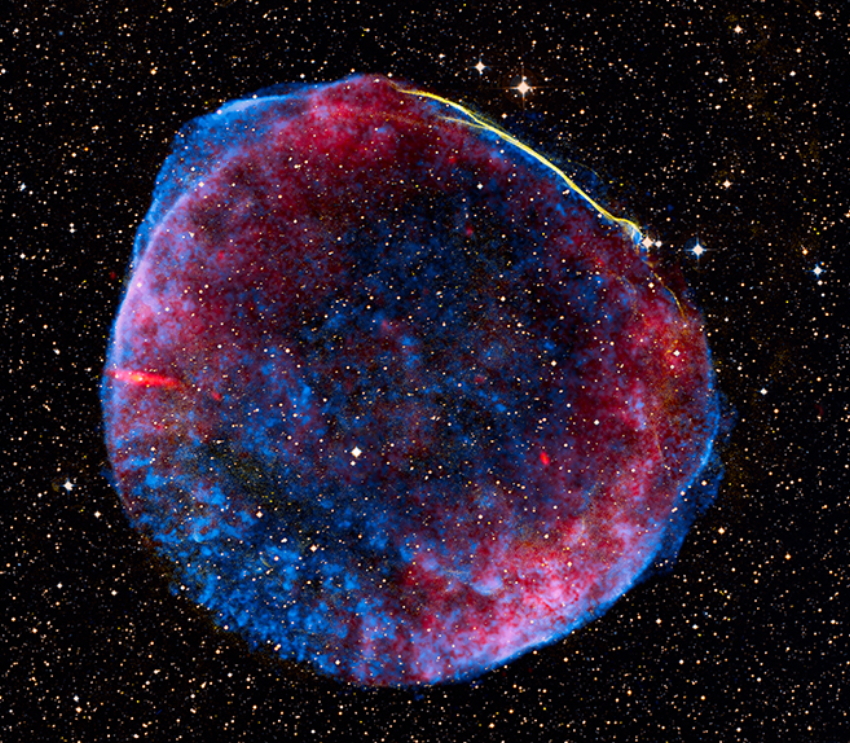
 Credit:X-ray: NASA/CXC/Rutgers/G.Cassam-Chenai, J.Hughes et al.; Radio: NRAO/AUI/NSF/GBT/VLA/Dyer, Maddalena & Cornwell; Optical: Middlebury College/F.Winkler, NOAO/AURA/NSF/CTIO Schmidt & DSS
Credit:X-ray: NASA/CXC/Rutgers/G.Cassam-Chenai, J.Hughes et al.; Radio: NRAO/AUI/NSF/GBT/VLA/Dyer, Maddalena & Cornwell; Optical: Middlebury College/F.Winkler, NOAO/AURA/NSF/CTIO Schmidt & DSS
Once a Star
By its light could be read ancient manuscripts as night was near bright as day. This though the candle lay more than 7000 lightyears distant. The event was a supernovae brought about as a white dwarf, a dead cinder of a sunlike star, tore material from the surface of a companion sun, until one day so much was accreted that a nuclear deflagration blew the dwarf apart. News of the event travelled more than 7000 years to be observed by astronomers in the middle and far east about 10 centuries ago. More than one thousand years later the remains of the explosion are intensely studied and hotly debated by astronomers across the electromagnetic spectrum. The image above shows the remains of the explosion, known as SN 1006, as observed in X-rays by the Chandra X-ray observatory (blue),
optical light from the University of Michigan's 0.9 meter Curtis Schmidt telescope at the National Science Foundation's Cerro Tololo Inter-American Observatory (CTIO; yellow) and the Digitized Sky Survey (orange and light blue), plus radio data from the NRAO's Very Large Array and Green Bank Telescope (VLA/GBT; red). These observations help astronomers understand how "standard" these candles are, and how these explosions accelerate subatomic particles to incredible speeds.
<
HEA Dictionary ● Archive
● Search HEAPOW
● Other Languages
● HEAPOW on Facebook
● Download all Images
● Education ● HEAD
>
Each week the HEASARC
brings you new, exciting and beautiful images from X-ray and Gamma ray
astronomy. Check back each week and be sure to check out the HEAPOW archive!
Page Author: Dr. Michael F. Corcoran
Last modified Monday, 26-Feb-2024 17:46:51 EST


